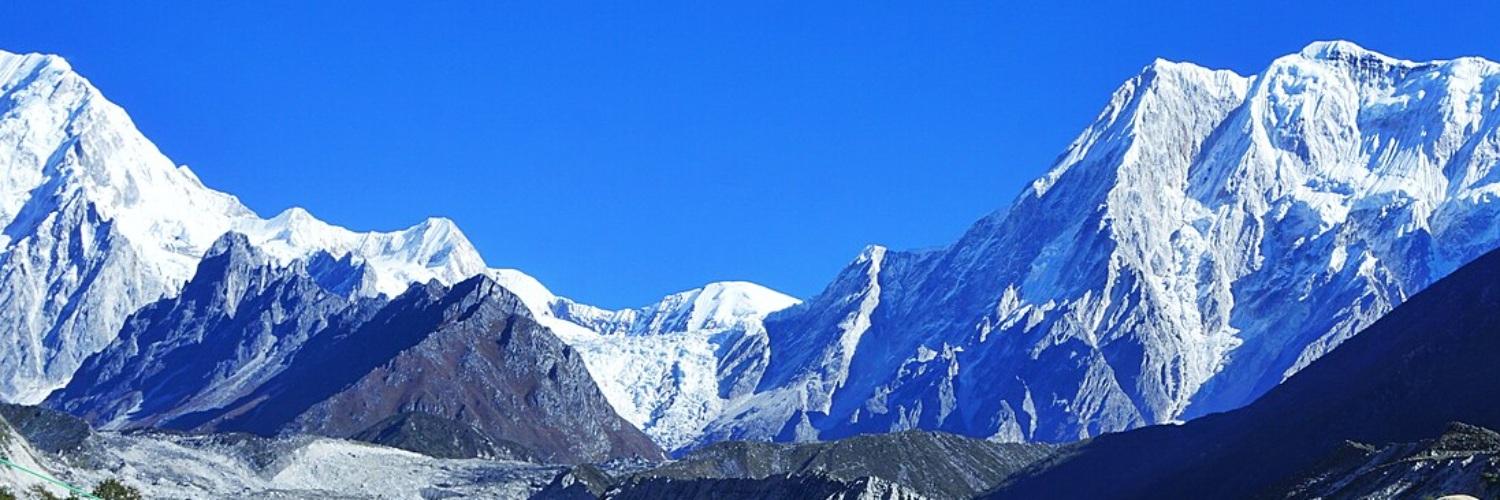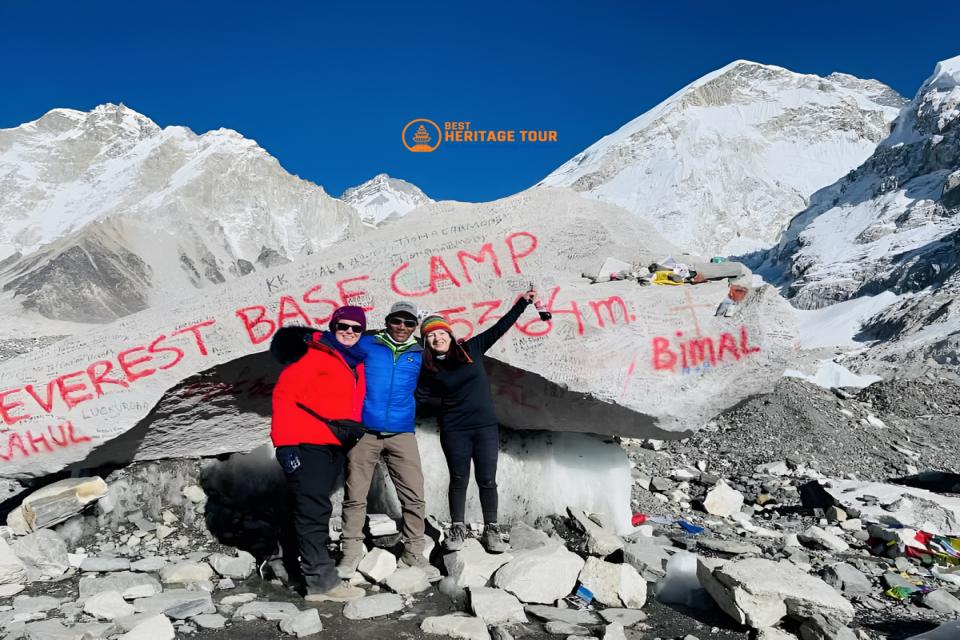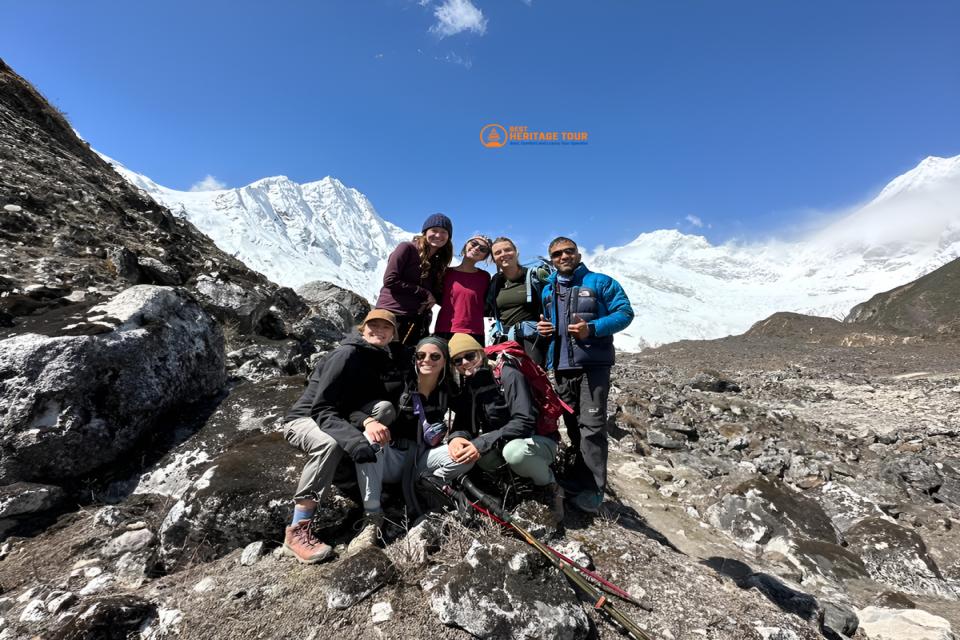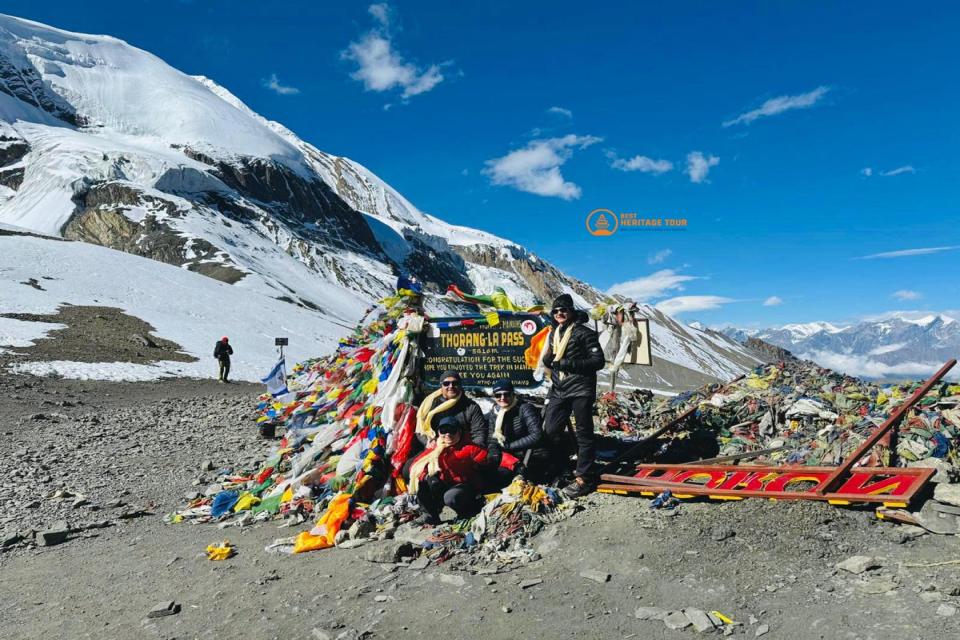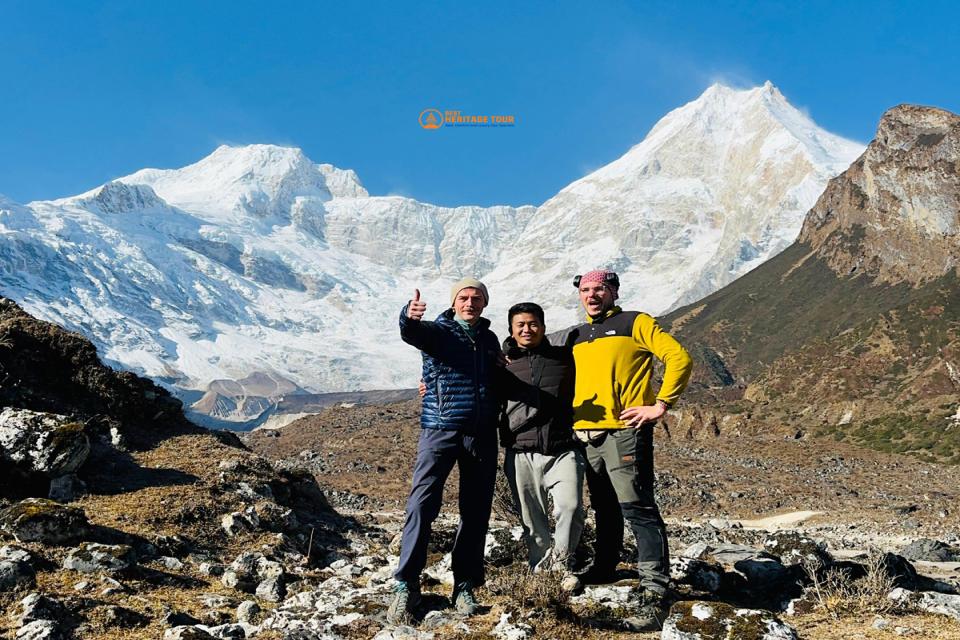If you’re planning a trek in Nepal, the Manaslu Circuit Trek is one of the most rewarding yet challenging adventures you can take. Known for its spectacular landscapes, rich cultural encounters, and remote trails, the Manaslu Circuit offers an unforgettable experience away from the more crowded trekking routes like Everest and Annapurna.
But before you pack your bags, one of the most common questions trekkers ask is: How long is the Manaslu Circuit Trek? Understanding the trek duration is essential for effective planning, from arranging permits and budgeting to training and acclimatization. In this comprehensive guide, we’ll explore the typical length of the Manaslu Circuit Trek, factors influencing its duration, and detailed itineraries to help you prepare for your journey.
Overview of the Manaslu Circuit Trek
The Manaslu Circuit Trek circles around Mount Manaslu, the world’s eighth-highest peak at 8,163 meters (26,781 feet). Situated in the western part of Nepal’s Gorkha district, this trek is gaining popularity as an alternative to the Annapurna Circuit due to its pristine environment, unique Tibetan-influenced culture, and less crowded trails.
Unlike the well-trodden routes to Everest Base Camp or Annapurna Base Camp, the Manaslu region still retains a raw, off-the-beaten-path charm. Trekkers pass through traditional villages, ancient monasteries, and lush forests before reaching the challenging Larkya La Pass, the highest point of the trek. Along the way, you’ll get panoramic views of the Annapurna and Ganesh Himal ranges, wild rhododendron forests, and the chance to experience authentic Nepali hospitality.
Due to its remote location and requirement for special permits, the Manaslu Circuit is considered a moderate to difficult trek, attracting adventure seekers who want an immersive trekking experience away from the crowds.
How Long is the Manaslu Circuit Trek?
The standard duration for completing the Manaslu Circuit Trek is typically 14 to 18 days. This timeframe includes walking days, acclimatization breaks, and time to reach and return from the trailheads. The trek covers a distance of approximately 177 kilometers (110 miles), starting from the trailhead near Soti Khola or Machha Khola and finishing at Dharapani, where you can catch a vehicle back to Kathmandu or Pokhara.
- Typical Daily Walking
Most trekkers walk an average of 4 to 7 hours per day, covering anywhere between 10 to 15 kilometers, depending on the terrain and altitude gain. Some days involve steep ascents or descents, particularly as you approach the high mountain passes, so pace and stamina play a big role in how quickly you progress.
- Factors Affecting Trek Duration
While 14 to 18 days is a common timeframe, the actual duration can vary based on:
- Trekking pace and fitness level: Experienced trekkers may move faster, shortening the trek, while beginners or those wanting a relaxed pace may take longer.
- Acclimatization needs: Taking extra rest days to adjust to altitude can add days.
- Side trips: Visiting Manaslu Base Camp or local monasteries can extend your schedule.
- Weather and trail conditions: Snow, rain, or road blockages can cause delays.
- Group size and support: Trekking with a guide or porter can influence daily mileage.
Planning your itinerary with flexibility ensures a safer and more enjoyable experience.
Standard Manaslu Circuit Trek Itinerary
Here’s a typical 14-day itinerary covering the Manaslu Circuit Trek. This outline includes major villages and stops along the way:
Day 1: Arrival at Tribhuvan International Airport, Kathmandu (1,400 m / 4,593 ft)
Day 2: Drive from Kathmandu to Machakhola (740 m / 2,428 ft)
Day 3: Trek from Machakhola to Jagat (1,300 m / 4,265 ft)
Day 4: Trek from Jagat to Deng (1,860 m / 6,102 ft)
Day 5: Trek from Deng to Namrung (2,630 m / 8,628 ft)
Day 6: Trek from Namrung to Lho Gaon (3,180 m / 10,433 ft)
Day 7: Trek from Lho Gaon to Samagaon (3,530 m / 11,581 ft)
Day 8: Acclimatization day in Samagaon (3,530 m / 11,581 ft)
Day 9: Hike from Samagaon to Mishima (approx. 3,700 m / 12,139 ft)
Day 10: Trek from Samdo (3,875 m / 12,713 ft) to Dharmasala (4,460 m / 14,633 ft)
Day 11: Trek from Dharmasala to Bhimthang via Larkya La Pass (5,160 m / 16,929 ft)
Day 12: Trek from Bhimthang to Goa (2,900 m / 9,514 ft)
Day 13: Trek from Goa to Tilije (1,570 m / 5,151 ft), then drive back to Kathmandu
Day 14: Tour ends / Departure from Kathmandu (1,400 m / 4,593 ft)
This itinerary balances trekking intensity with crucial acclimatization days, especially around Samagaon, to help minimize altitude sickness risks. Some trekkers may customize their schedule with extra rest days or side excursions to Manaslu Base Camp or nearby monasteries for a richer cultural experience.
Variations in Trek Duration
The Manaslu Circuit Trek offers flexibility to suit different fitness levels and trekking styles, which means the total duration can vary from about 12 days up to 18 days or more.
-
Shorter Itinerary (12-13 Days): Experienced trekkers or those on tight schedules sometimes opt for a compressed itinerary, completing the trek in about 12 to 13 days. This means longer daily walking hours, up to 8-10 hours some days, and fewer rest days. While doable, this faster pace leaves less time for proper acclimatization, increasing the risk of altitude sickness.
-
Extended Itinerary (16-18+ Days): For a more comfortable trek or for those wanting to explore more, an extended itinerary of 16 to 18 days is common. This includes:
- Extra acclimatization days at key spots like Samagaun or Samdo
- Side trips to Manaslu Base Camp, the stunning glacier at the foot of Mount Manaslu
- Visits to cultural sites such as Pungen Gompa and Birendra Lake
- More time to enjoy local villages and nature
This relaxed pace is especially recommended for beginners or those trekking in the shoulder seasons.
Trekking Distance and Elevation Gain
Understanding the daily distances and elevation changes is key to estimating how long the Manaslu Circuit Trek will take.
- Total Distance: Approx. 177 kilometers (110 miles)
- Average Daily Distance: 10–15 kilometers, varying by terrain and altitude
- Elevation Gain: Gradual ascent from around 600 meters (Soti Khola) up to the Larkya La Pass at 5,160 meters
- Highest Point: Larkya La Pass (5,160m / 16,929 ft.), the challenging mountain pass that tests your stamina and acclimatization
The trek’s gradual climb helps many trekkers adjust well to the altitude, but some days involve steep ascents or descents that require good physical conditioning.
Acclimatization and Its Impact on Duration
Altitude acclimatization is crucial on the Manaslu Circuit Trek to prevent acute mountain sickness (AMS) and other altitude-related health risks.
-
Why Acclimatization Matters: As you ascend above 3,000 meters (9,842 ft), your body needs time to adapt to thinner air. The Manaslu trek crosses several high passes and reaches over 5,000 meters, so it’s essential to:
-
Ascend slowly
-
Include rest or acclimatization days
-
Hydrate well and monitor for symptoms of altitude sickness
-
-
Recommended Acclimatization Stops: Common places to spend extra days include:
-
Samagaun (3,530m): Gateway to the base camp with good facilities and side treks
-
Samdo (3,860m): The last permanent village before the high pass
-
Dharmasala (4,460m): Ideal for resting before the Larkya La Pass ascent
-
Incorporating these stops adds 1-3 days to your trek but greatly enhances safety and enjoyment.
Transportation Time: Kathmandu to Trailhead
The Manaslu Circuit trek officially starts near Soti Khola or Machha Khola, accessible by road from Kathmandu or Arughat Bazaar. The time it takes to reach the trailhead can impact your total trekking schedule.
-
Getting to Soti Khola or Machha Khola
-
Kathmandu to Soti Khola: Typically a 7-9 hour drive via Arughat Bazaar on rough mountain roads. The route includes long stretches of gravel roads and can be bumpy, so many trekkers hire private jeeps or take local buses.
-
Kathmandu to Machha Khola: Slightly longer, about 8-10 hours depending on road conditions.
-
-
Returning from Dharapani or Besisahar: Most trekkers finish at Dharapani or nearby Besisahar, from where you can take jeeps or buses back to Kathmandu or Pokhara. This journey usually takes 6 to 8 hours, but delays due to weather or road maintenance are common in the monsoon and winter seasons.
-
Buffer Days for Road Delays: Because the mountain roads are vulnerable to landslides or floods, especially during the monsoon, it’s smart to add 1 or 2 buffer days before and after the trek for travel uncertainties.
Factors That Affect Trekking Time
Several key factors influence how long the Manaslu Circuit Trek will take for different trekkers. Understanding these can help you set realistic expectations.
-
Weather and Season:
- Spring (March to May) and Autumn (September to November) are considered the best trekking seasons with stable weather, allowing for steady daily progress.
- During the monsoon (June to August), heavy rain and landslides often slow down the trek and increase the risk of road closures.
- In winter (December to February), snow at higher elevations like Larkya La Pass can cause delays or require additional gear and caution.
-
Trekking Experience and Fitness Level:
- Experienced, fit trekkers often cover longer distances per day and recover faster, shortening the total trek duration.
- Beginners or those with moderate fitness might prefer shorter days and extra rest, extending the trek by a few days.
-
Group Size and Pace:
- Larger groups tend to move slower due to varying fitness levels and logistical coordination.
- Solo trekkers or small groups can often maintain a quicker pace.
-
Guided vs Independent Trekking:
- Hiring a guide or porter can improve efficiency, allowing you to focus on trekking while your support handles logistics.
- Independent trekkers may take longer managing navigation, accommodation, and supplies.
-
Rest Days and Personal Preferences:
- Some trekkers choose extra rest days for sightseeing or photography.
- Personal health, injuries, or altitude symptoms can also extend the trek duration.
Best Time to Do the Manaslu Circuit Trek (For Ideal Duration)
Choosing the right season significantly affects not only your trekking experience but also how long it takes to complete the Manaslu Circuit.
-
Spring Season (March to May):
- Clear skies, blooming rhododendrons, and moderate temperatures make this a favorite trekking season.
- Stable weather helps maintain a consistent pace, reducing delays.
-
Autumn Season (September to November):
- After the monsoon, the air is crisp and visibility is excellent.
- Cooler temperatures at higher altitudes aid acclimatization.
- The trails are busy but well-maintained.
-
Off-Season Trekking:
- Winter: Snow and freezing temperatures can slow progress and increase risks, especially near the Larkya La Pass.
- Monsoon: Heavy rains and landslides cause trail erosion and road blockages, leading to delays.
For most trekkers aiming to complete the Manaslu Circuit comfortably within 14-18 days, spring and autumn remain the ideal windows.
Sample Itineraries by Duration
To help you visualize how the trek duration fits into your travel plans, here are a few sample itineraries:
-
14-Day Standard Itinerary:
- Balanced walking and acclimatization days
- Starts at Soti Khola, finishes at Dharapani
- Includes rest day at Samagaun or Samdo
- Suitable for moderately experienced trekkers
-
16–18 Day Extended Itinerary:
- Adds side trips to Manaslu Base Camp and Pungen Gompa
- Extra rest days for acclimatization
- Ideal for beginners or those wanting a relaxed pace
-
12-Day Compressed Itinerary:
- Longer daily distances, limited rest
- For experienced, fit trekkers comfortable with fast pacing
- Higher risk of altitude sickness if acclimatization is inadequate
Is the Manaslu Circuit Trek Worth the Time?
The Manaslu Circuit Trek is widely regarded as one of Nepal’s most scenic and culturally rich treks. Many trekkers find that the 14-day to 18-day time investment is well worth it.
-
Scenic and Cultural Value:
- Spectacular mountain views, including Mount Manaslu itself
- Remote villages preserving Tibetan Buddhist culture
- Diverse landscapes from subtropical forests to alpine meadows
-
Off-the-Beaten-Path Experience:
- Far fewer crowds than the Annapurna region or the Everest region
- Authentic homestays and teahouses
- Intimate connection with nature and local life
-
Time vs Reward: While longer than some popular treks, the Manaslu Circuit offers unmatched solitude and cultural immersion. For those valuing quality over quantity, the trek’s duration is a small price for an unforgettable adventure.
Conclusion
The Manaslu Circuit Trek is a spectacular journey that blends breathtaking mountain vistas, rich Tibetan-influenced culture, and rugged adventure. Knowing how long the trek is, typically between 14 and 18 days, helps you plan your permits, training, and logistics effectively.
While the total trek distance is about 177 kilometers (110 miles), your pace, acclimatization needs, weather, and side excursions can all impact your final itinerary. Whether you choose a standard 14-day trek or a more relaxed 18-day exploration, preparing for the trek’s duration is key to a safe, enjoyable, and memorable experience.
If you’re dreaming of off-the-beaten-path trekking in Nepal and want to challenge yourself with one of the country’s most rewarding treks, the Manaslu Circuit is absolutely worth the time it takes.
Ready to trek the Manaslu Circuit? Join Best Heritage Tour for a seamless, guided adventure through one of Nepal’s most rewarding Himalayan treks. From permits and transportation to expert guides and gear tips, we handle everything, so you can focus on the journey.
Book your Trek or get more info today:
- Phone/WhatsApp/Viber: +9779851149197 / +9779810043046
- Email: bestheritagetour@gmail.com / info@bestheritagetour.com
- Website: www.bestheritagetour.com
- Location: Thamel Marg, Kathmandu, Nepal
Book your Manaslu Circuit Trek for 2025/2026 and experience the Himalayas like never before!
Author: Best Heritage Tour
Date: 20th June, 2025

